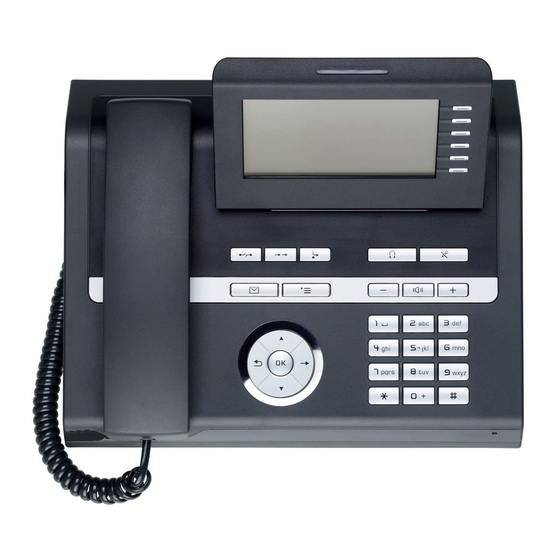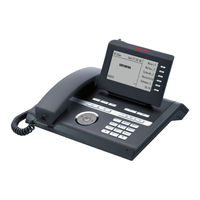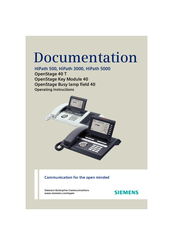
Siemens OpenStage 40 T Manuals
Manuals and User Guides for Siemens OpenStage 40 T. We have 4 Siemens OpenStage 40 T manuals available for free PDF download: User Manual, Operating Instructions Manual, Quick Reference Manual
Siemens OpenStage 40 T User Manual (142 pages)
Table of Contents
-
-
Key Module14
-
Keys17
-
Audio Keys17
-
Keypad20
-
Display22
-
Idle Mode22
-
-
Mailbox26
-
Caller List27
-
Menu28
-
-
Making Calls35
-
-
Making Calls50
-
-
-
-
-
Lines103
-
Line Utilization103
-
Line Seizure104
-
-
Trunk Keys104
-
-
-
Fixing Problems
128 -
Index
131 -
Display Icons
141
Advertisement
Siemens OpenStage 40 T User Manual (129 pages)
HiPath 4000
Table of Contents
-
-
-
Making Calls32
-
-
Making Calls50
-
-
-
Line Keys95
-
Preview97
-
Line Mailbox103
-
Ring Transfer111
-
-
-
-
Fixing Problems
122 -
Index
125 -
Display Icons
128
Siemens OpenStage 40 T Operating Instructions Manual (136 pages)
Table of Contents
-
-
Keys16
-
Audio Keys16
-
Keypad19
-
Display21
-
Idle Mode21
-
-
Mailbox25
-
Caller List26
-
Menu27
-
-
Making Calls33
-
-
Making Calls47
-
-
-
-
-
Figuration
99 -
Lines99
-
Line Seizure100
-
Trunk Keys100
-
-
-
Fixing Problems
124
Advertisement
Advertisement



